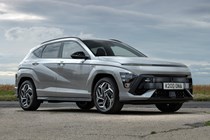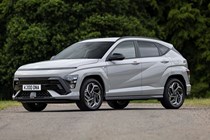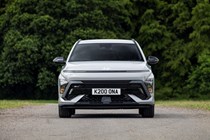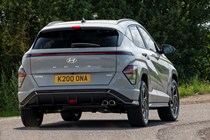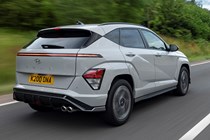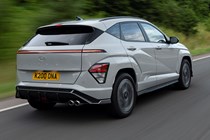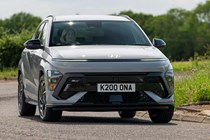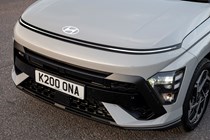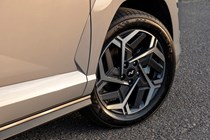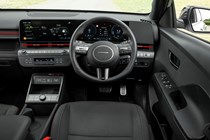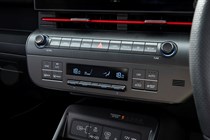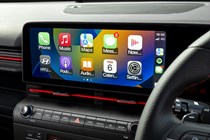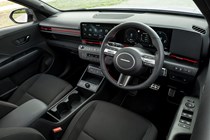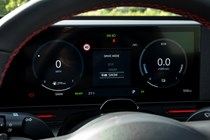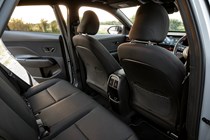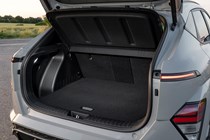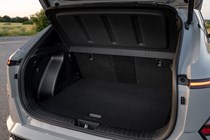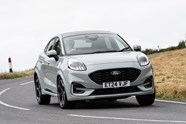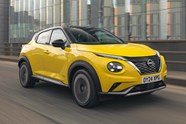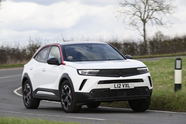
Hyundai Kona review
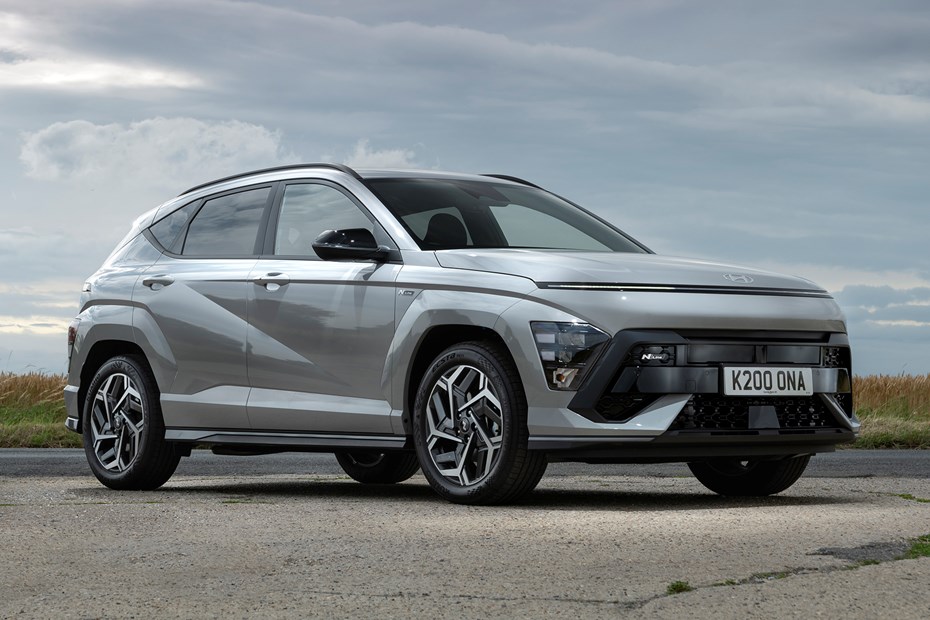
At a glance
| Price new | £26,735 - £36,940 |
|---|---|
| Used prices | £16,109 - £29,859 |
| Road tax cost | £195 |
| Insurance group | 14 - 28 |
Get an insurance quote with

|
|
| Fuel economy | 42.2 - 62.8 mpg |
| Miles per pound | 6.2 - 9.2 |
| Number of doors | 5 |
| View full specs for a specific version | |
Available fuel types
Petrol
Hybrid
Pros & cons
- Petrols, hybrid and EV versions offered
- All models are roomy and well equipped
- Avantgarde styling – outside and in
- Some of the safety kit too intrusive
- Hybrid model not as smooth as some
- Not the most exciting crossover going
Hyundai Kona SUV rivals
Overview
The Hyundai Kona is a compact crossover in that booming market segment where buyers want something between a full SUV and a regular family car. This bodystyle is popular for a reason: it mixes the tip-toes stance, great visibility and practicality of a full 4x4 with the lower prices, driving dynamics and familiarity of a five-door hatchback.
So the Kona arrives in a market saturated with the likes of the Vauxhall Mokka, Ford Puma and Nissan Juke and it has its work cut out to tempt motorists weaned on mainstream European brands to come and try this South Korean alternative.
It certainly has a distinctive look on its side to pique your interest. With pencil-thin lighting bars front and rear, the Kona looks like nothing else in the sector. Hyundai really is on a roll with its design these days, even if more conservative buyers may find it too much.
More importantly, the Kona backs up its daring wardrobe with a technical smorgasbord of engine choices: you can have your Hyundai in petrol, hybrid or full electric forms. Other than missing a diesel option, it’s got every base covered and in our review we will advise which powertrain might be best for you.
It’s bigger than before, to the benefit of interior space for bodies and bags, yet this remains a compact crossover that’s easy to thread through crowded city streets or along your favourite back road.
The Hyundai Kona range comes in four trim levels: Advance, N Line, N Line S and Ultimate. The entry-level Advance gets dual-zone climate control, front and rear parking sensors with a rear camera, 17-inch alloy wheels and keyless entry. Most importantly, Apple CarPlay and Android Auto come as standard across the board, as does a large central touchscreen. N Line spec adds a bodykit, side skirts, 18-inch alloy wheels, and heated N Line cloth seats.
N Line S gains leather seats (heated and ventilated) with electric adjustable and three-zone air conditioning while Ultimate adds a sunroof, uprated sound system and a number of option packs. These include Hyundai’s Premium Relaxation front seats and remote park assist (on hybrid models).
That’s a lot of choice in the showroom, but should you buy a Hyundai Kona instead of one of its more popular rivals? Read on for our full verdict to find out – we’ll consider its driving experience, the interior, how efficient, safe and reliable it is, plus we’ll check out the practicality and its running costs. If you’d like to know how we measure and test each attribute of the cars we drive, be sure to check out our page on how we test cars.



